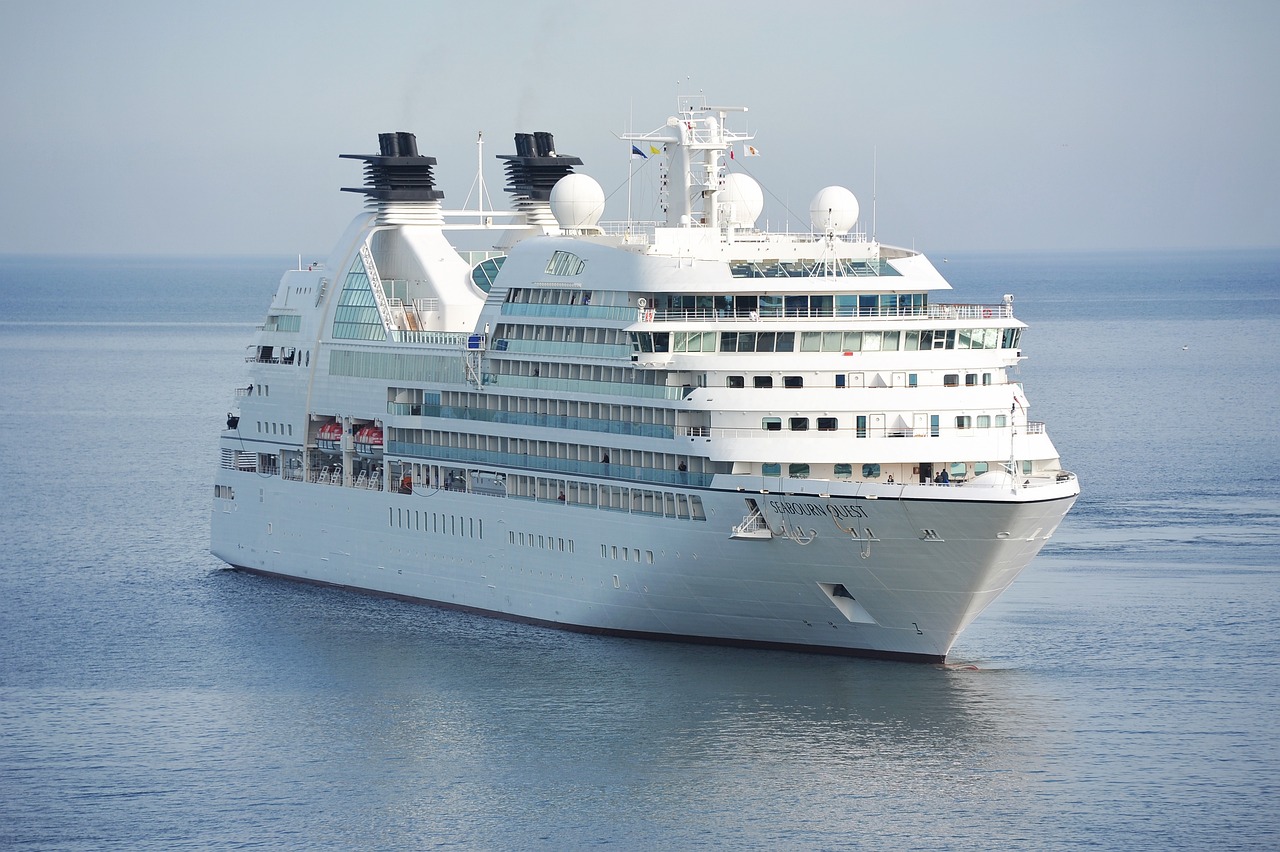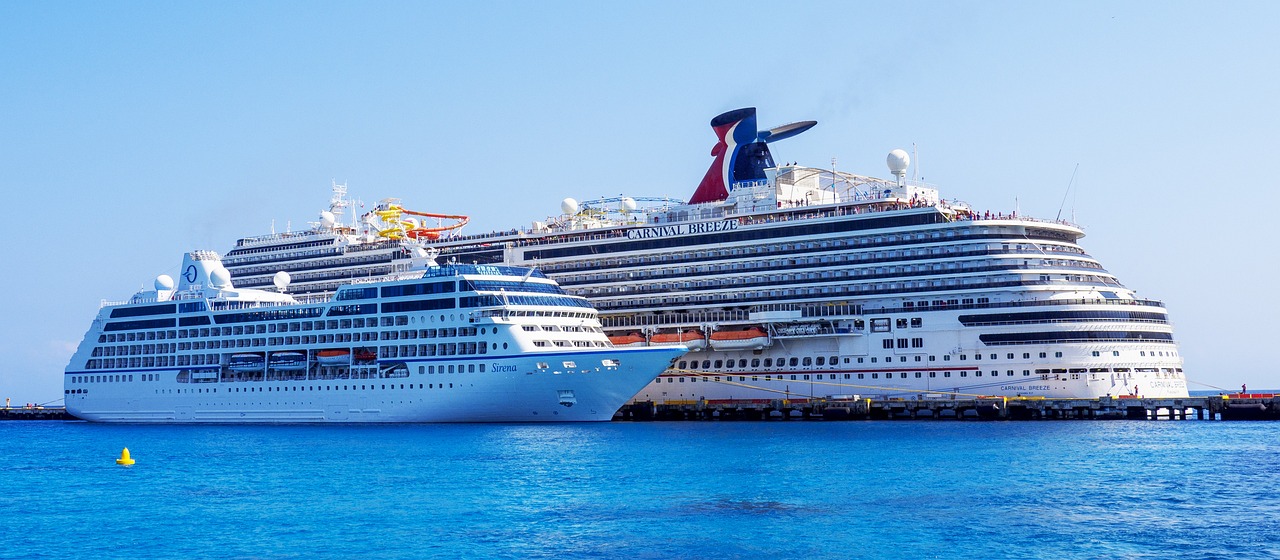Sailing on a small cruise ship has its own advantages and disadvantages and provides a different experience compared to larger cruise ships.
In recent years, popular cruise lines like Royal Caribbean and Carnival have tended to focus on larger ships. This could mean a possible decline in ship quality and service quality for smaller ships.
Still, there are plenty of good reasons to choose a smaller cruise ship.
Here are some pros and cons to consider:
Advantages of sailing on a small cruise ship
More intimate atmosphere on smaller cruise ships
Smaller cruise ships can often accommodate fewer passengers, creating a more intimate and personalized experience among smaller groups of people. This promotes better interaction with other passengers and crew.
Smaller ships typically have more comfortable public spaces, lounges, and dining areas, making it easier for passengers to interact and socialize.
With fewer passengers to care for, crew can provide more personalized service and build closer relationships with guests.
The atmosphere on smaller cruise ships tends to be quieter and less busy, allowing passengers to enjoy a peaceful and tranquil cruise experience.
Overall, the smaller ship size promotes a sense of community and intimacy among passengers, enhancing the intimate atmosphere of the cruise.

Better access to smaller ports on smaller cruise ships
Smaller ships can enter ports that larger ships cannot. This allows for more variety in itineraries, visiting less crowded and more unique destinations.
Smaller ships have shallow drafts (the part of the ship that is underwater), allowing them to pass through narrower channels, shallow waters, and smaller ports that are inaccessible to larger ships.
Their smaller size and narrower width allow them to maneuver more easily in tight spaces and dock in smaller, less developed ports that lack facilities for larger ships.
Smaller ships generally have smaller ecological footprints, making them more popular in environmentally sensitive or protected areas.
Their ability to reach these off-the-beaten-path ports and destinations allows them to offer unique and off-the-beaten-path itineraries that appeal to travelers looking for a more exclusive experience.
The smaller size of these cruise ships makes them versatile and adaptable, allowing passengers to travel to a wider range of ports and destinations.
Queues and wait times are much shorter on smaller cruise ships
Smaller cruise ships usually have shorter lines and wait times because they accommodate fewer passengers than larger cruise ships.
By reducing passenger capacity, embarkation, disembarkation, catering and other onboard services can be managed more efficiently, thereby reducing congestion and providing faster service to passengers.
With fewer passengers, there’s less time waiting in line and more time you can spend enjoying your cruise.
Less crowded space on smaller cruise ships
Communal areas such as lounges, decks and dining venues on smaller cruise ships tend to be less crowded, providing a more peaceful environment.
The advantage of less crowding on smaller cruise ships is that passengers can enjoy a calmer and more relaxing experience.
Fewer people vying for amenities, shorter lines, more intimate interactions with other passengers and crew, and a generally quieter and less hectic atmosphere make for a more enjoyable and personalized cruise experience.
More personalized service on smaller cruise ships
Smaller ships often offer more attentive and personalized service because the crew can get to know the passengers more personally.
Passengers tend to receive more personalized service on smaller cruise ships for a number of reasons. Smaller cruise ships have a higher crew-to-passenger ratio, which means more staff can be available for passengers.
Crew members on small ships often have the opportunity to get to know passengers on a personal level, allowing them to anticipate and cater to specific preferences.
With fewer passengers to serve, crew members have more time to interact with guests and provide tailored assistance. Smaller ships offer a more comfortable and intimate environment, making it easier for crew members to build rapport and provide attentive service.
With reduced passenger capacity, smaller ships can be more flexible to accommodate passenger requests and customize the experience.
Overall, the smaller size of the ships and the smaller number of passengers creates a conducive environment for providing personalized and attentive service to passengers.
There’s a sense of community on smaller cruise ships
With fewer passengers, it’s easier to connect with other travelers and create a sense of community on board.
On smaller cruise ships, there is a sense of community as there are fewer passengers, creating a close-knit atmosphere. With fewer passengers, passengers have more opportunities to interact, get to know each other and build connections.
Smaller ships often have intimate communal areas, creating a sense of togetherness among passengers. Passengers on small ships tend to participate in similar activities and excursions, fostering bonding and camaraderie.
Crew can interact with passengers on a more personal level, enhancing a sense of belonging.
These factors combine to create a communal atmosphere where passengers can often form friendships and enjoy a shared cruise experience on smaller ships.
Disadvantages of sailing on a small cruise ship
Limited onboard facilities on small cruise ships
The main disadvantage of limited amenities on smaller cruise ships is that passengers may have fewer entertainment options, dining options, and onboard amenities than on larger cruise ships.
For passengers who prefer a variety of amenities during their cruise vacation, this can result in a more limited range of activities and experiences.
Motion sickness possible on small cruise ships
Smaller ships are more susceptible to ocean movement, which can lead to increased cases of motion sickness for some passengers.
Smaller cruise ships are generally more susceptible to the rocking and rocking motion of the sea, and passengers feel it more clearly and intensely.
Less entertainment on smaller cruise ships
While smaller ships may offer quality entertainment, their variety of shows and events may be more limited than the larger, more elaborate productions on larger ships.
There are fewer dining options on smaller cruise ships
Dining options may be more limited on smaller cruise ships, with fewer specialty restaurants and dining options available.
Cabins on smaller cruise ships may be smaller
Cabins and staterooms on smaller cruise ships may be smaller in size than on larger cruise ships, potentially resulting in less space and amenities.
There may be fewer family and kid-friendly activities on smaller cruise ships
Smaller ships may attract fewer families, which may result in fewer child-friendly activities and create a less child-centered environment.
Smaller cruise ships may be more vulnerable to weather
Smaller ships may be more susceptible to adverse weather conditions, which may result in Itinerary changes Or it may be more difficult to navigate under certain conditions.
final thoughts
Overall, sailing on a smaller cruise ship offers a more intimate and unique experience, as well as access to smaller port and a more relaxed atmosphere. However, it may come with fewer onboard amenities, potential motion sickness issues, and less diverse entertainment and dining options. Your preference will depend on your personal preference for the cruise experience you are looking for.
List of small cruise ships
Royal Caribbean Rhapsody of the Seas
Gross tonnage: 78,491
Length: 915 feet
Passengers: 2,416
Gross tonnage: 71,909 tons
Length: 855 feet
Passengers: 2,190
Gross tonnage: 30,150 tons
Length: 665 feet
Passengers: 378
Gross tonnage: 5,175 tons
Length: 360 feet
Passengers: 100
Gross tonnage: 65,542 (two ships)
Length: 275 (two boats)
Passengers: 2,546 (Sinfonia) 2,520 (Armonia)
Gross tonnage: 17,400 tons
Length: 515 feet
Passengers: 247
World Navigator – Atlas Ocean Voyages
Gross tonnage: 10,000 tons
Length: 423 feet
Passengers: 196
Gross tonnage: 5,703 tons
Length: 360 feet
Passengers: 148
Celebrity cruise ship: Celebrity Flora
Gross tonnage: 5,922
Length: 333 feet
Passengers: 100
If you want to try a unique small boat cruise, try the legendary tall ship Prussia. The vessel is 439 feet tall, has 42 sails, and has a total area of 54,000 square feet. The ship can accommodate 227 passengers and has an offshore platform for going to sea. Learn more here:
Star Clippers Sail Tall Ship Cruise – Royal Clipper
This page contains affiliate links, which may result in us receiving financial compensation when a purchase is made through one of our affiliate partners.
about
Joy is the co-founder and content manager/expert of CruisePortAdvisor.com, where she is also one of the site’s founders. She enjoys traveling, singing and baking.







